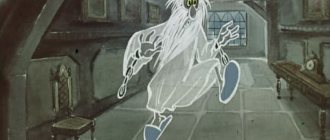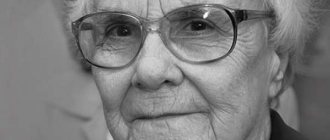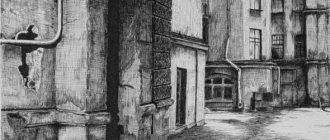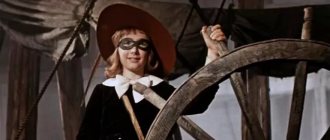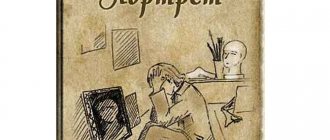English literature has made a huge contribution to world culture. This country has given birth to a considerable number of original and bright writers. The nineteenth century is perceived as the period of the dawn of Great Britain in politics, economics, and culture. At the end of this important century for all Englishmen, Oscar Wilde worked, who became, perhaps, the face of this period itself, and one of the most famous English writers around the world, along with William Shakespeare and George Orwell. Wilde’s most famous creation, with which this writer is associated today, is the novel “The Picture of Dorian Gray.” Analysis of the book according to plan is offered to you by the Many-Wise Litrecon.
History of creation
The history of writing the novel “The Picture of Dorian Gray” will reveal many interesting facts to the reader:
- The nineteenth century in England went down in history under the name “Victorian era”. Along with the colossal achievements of scientific and technological progress and British diplomacy, a feature of this period was the establishment of the strictest moral and ethical framework in the highest circles of English society. The upper echelons of English society sought to refine their lives, to create a dazzling external effect, behind which, however, numerous vices and moral decay continued to be hidden.
- The art of decadence, in which Wilde himself worked, was born largely from the protest of part of the English intelligentsia against such a way of life, which cultivated hypocrisy, arrogance and snobbery. Instead of masking the ills of society, including their own depravity, the decadents sought to expose them, to put them on display, even finding some pleasure in it. Oscar Wilde drew inspiration for his creation from Gothic novels and dramatic works of the Enlightenment, among which was the well-known “Faust” by Johann Goethe, from which he emphasized mysticism and general gloom.
- The author wrote the novel in just two weeks and on a dare: he decided to prove that he could write the loudest book in record time, which absolutely everyone would talk about. He won the bet: The Picture of Dorian Gray became a stunningly famous and resonant creation, albeit with a minus sign. Most readers from the upper strata saw an insult addressed to them on the pages.
- Oscar Wilde was convicted for his novel and served in prison on charges of violating moral standards and insulting society. Yes, yes, Puritan England also valued its dignity too highly to allow it to be insulted without criminal prosecution.
Genre and direction
Wilde worked in a completely new literary direction for world literature at that time, its name was modernism. The writer does not strive for a meticulous depiction of reality, placing the idea itself and the means of expressing it above the immediate realism of what is happening. The structure of the work is far from classical; the narrative is told in episodes and from several characters.
The genre of The Picture of Dorian Gray can be defined as a novel. The narrative covers a long period of time and includes a large number of characters. The events described in the novel have a significant impact on the world of the book itself and have significant consequences.
Genre
“The Picture of Dorian Gray” can be classified as an intellectual novel. In the work, the characters and the narrator are subject to introspection, comprehension of their actions and surroundings. Their conversations go beyond the plot, representing a debate of certain philosophical views. The book raises the most important aesthetic, moral and “eternal” problems.
Based on the time of creation and style, the work can be attributed to a Victorian novel. This is how English prose was called during the reign of Queen Victoria - an era of calm, puritanism and hypocrisy. Its author gracefully ridicules Lord Henry in his remarks.
The definition of “allegorical parable” is also applicable to the book. The events taking place in it should not be taken literally. The heroes are not people, they represent philosophical views, magical pictures - vicious temptation, death and love - trials, copper pipes that open the veil over human nature.
The direction of the author's creative thought is at the junction between romantic, fantastic and realistic principles. Thus, the book reveals an element of fantasy (the magical power of the portrait), the psychological and social components of realism and the romantic type of the main character.
The gist: what is the novel about?
The novel “The Picture of Dorian Gray” tells how one day the talented artist Basil Hallward, talking with Lord Henry Wotton, draws a portrait of his friend Dorian Gray. When the conversation turns to Dorian himself, Lord Henry begins to become very interested in the young man.
When Gray himself appears, Wotton's interest only intensifies. Meanwhile, Dorian, looking at his portrait, is saddened by the fact that Basil’s painting will always be beautiful, and Dorian himself is doomed to aging and death, the young man wants the portrait to grow old, but he himself will always remain young.
Lord Henry begins to implement his plan: he wants to corrupt the naive and pure Gray, to make him as vicious as himself.
Some time passes, Dorian falls in love with a simple actress - Sibyl Vane. He invites Basil and Henry to a performance in which the girl plays the role of Juliet. However, ironically, it is love that destroys Sybil when she begins to invest her real feelings in Dorian, the undemanding audience boos her, and Dorian breaks off relations with her. The next day, the main character wants to make peace with his lover, but the girl commits suicide.
Lord Henry advises Dorian to continue living as if nothing had happened, without tormenting himself with guilt. Gray succumbs to Wotton's sweet speeches, and from that moment his downfall begins. Outwardly, the hero remains the same, but the portrait created by Hallward begins to gradually transform: a hard wrinkle appears on the face of Dorian painted on it. The young man understands that the portrait takes upon itself all the evil that he does, but Dorian himself remains as beautiful and young.
Twenty years pass. Dorian finally accepts Lord Henry's philosophy of life, leads a vicious lifestyle and, just like Henry once did, amuses himself by dragging young people with him into the abyss of vice. During all this time, the hero has not aged a day, and only his portrait becomes more and more disgusting.
One day, fate brings Dorian together again with Basil Hallward, who is outraged by his friend’s behavior and tries to reason with him. In response to reproaches, Gray shows Basil an ill-fated portrait, which depicts a vile old man instead of a beautiful young man. Hallward is horrified, Dorian, however, also loses control of himself, beginning to blame the artist for his fall from grace, and kills him in anger.
Having dissolved the body of his former friend in nitric acid, Dorian returns to his usual way of life, but unexpectedly fate brings him together with Sibyl Vane’s brother, James, who is looking for Dorian Gray, wanting to kill him. Using cunning, the hero avoids reprisals, and James himself soon accidentally dies.
However, Dorian does not feel relief, but only emptiness and loneliness. The old man in the ill-fated portrait becomes even more disgusting than before. The hero tries to take the path of correction by releasing the village girl whom he wanted to discredit, but, looking at the portrait, he saw that this good deed was just a manifestation of vanity. Distraught, Dorian rushes at the painting with a knife. In the morning, servants find in Gray's house a portrait of a beautiful young man and an old man lying next to him with a knife in his chest. By the ring they recognize the dead man as Dorian Gray.
The main characters and their characteristics
The system of images and characteristics of the heroes in the novel “The Picture of Dorian Gray” are indicated in the table. The wise Litrekon can enrich it with new characters if you write who is missing?
| Dorian Gray | A beautiful and naive young man with golden curls. Dreamy and selfish. A driven and weak-willed person who is seduced by the permissiveness of hedonism. He is disgusted by the material world, preferring to hide from it in the world of aesthetics. Because of this, Sybil's true feelings disgust him, and his spiritual weakness and frivolity make him an easy prey for the tempter Lord Henry. |
| Lord Henry Wotton | Middle aged man. Aristocrat. Nihilist, cynic and libertine. At the same time, he is an extremely witty and pleasant person to talk to. Constantly speaks in aphorisms. Despite his disdain for all social norms, he manages to exist calmly in a society where everyone accepts and respects him. |
| Basil Hallward | Young man. A talented artist who values art and beauty more than anything else. Bows to Dorian Gray. Wanting to save his soul, he enters into battle with Wotton, but due to his indecision he suffers a crushing defeat, which leads to the fall of Dorian and the death of Basil himself. |
| Sybil Vane | A pretty and gifted girl. Actress of a seedy theater. Love for Dorian awakened sincere feelings in her. She began to despise the theater and her place in it, seeing the insincerity and pretense of everything that happened on stage. The girl tried to play the role of Juliet in a new way, putting her sincere feelings into this role, but neither the audience nor Dorian himself appreciated her performance. Dorian himself rejected Sybil, which pushed the girl to commit suicide. |
Main characters
- Dorian Gray is a naive and beautiful young man who turned into a depraved and insensitive egoist under the influence of Lord Henry. He is a nobleman, a descendant of a noble family. His soul eagerly sought a mentor in the secular world that was new to him. Having chosen a sophisticated and vicious example to follow, the hero, being weak-willed and driven, rushes to try out all the cynical advice of his senior comrade. From the very beginning it is clear that he is a sensual but cowardly self-lover, because the thought of losing his own beauty (the only difference from other men in his circle) enslaves his mind, which has not yet had time to develop. He easily betrays his love for other people, this speaks of the pettiness of his nature and the stinginess of his heart. Using his example, the author draws a parallel between internal and external wealth, which are not at all identical to each other. The writer has already embodied the image of Dorian Gray in the fairy tale “Boy Star”. Wilde turns that hero into a freak, not giving him the opportunity to hide the ugliness. Therefore, he quickly transforms into a good and highly moral young man, aware of his guilt. However, the novel is not a fairy-tale parable; in it, the creator truthfully told about what awaits the arrogant and self-obsessed character.
- Lord Henry is a wealthy and refined nobleman, well accepted in high society. His sarcastic remarks and casuistic worldview (he professes hedonism) are liked by the people around him, who enjoy his wit. Every second quote of his is an aphorism. However, he himself never follows his bold thought. He admonishes, cunningly, gradually corrupts Dorian’s soul, but he himself does nothing of the kind. His image is traditionally compared to the archetype of the devil in literature. Wotton is like Mephistopheles from Goethe's Faust: he only guides a person, skillfully shuffling hedonistic ideas, subtle humor and arrogant cynicism. The spirit of depravity emanating from this hero is attractive. He has sophistication and sublimity, but this is only external beauty, which, like the beauty of his face, is only a fragile veil of a rotten sinful essence.
- Sibyl Vane - Dorian's lover, actress. The girl of rare beauty was also very talented. She amazed Gray with her talent. He loved her for him, because the artist could never get bored: she transformed into different images every day. The real Sybil was ready to sacrifice her career, success, creativity itself for the sake of love, and, feeling this, the young man quickly became fed up with adoration. He liked the stage, far-fetched lady of his heart, as free and incomprehensible as himself. But the young woman was only kind, dreamy, naive and vulnerable. Therefore, the first disappointment in people made her commit suicide. Neither her mother nor her brother were able to disabuse her of her rosy hopes in time.
- Basil Hallward is a painter, a friend of Dorian and Lord Henry, who introduces them. It was he who painted the fatal portrait. The artist sincerely admired the sitter and his beauty, and it was he who sensitively perceived the changes that had occurred in the young man. He saw the emerging depravity in him and sounded the alarm, but Gray only distanced himself from him in response. Basil was a humanist and moralist, his moral principles contrast with Henry's refined immorality, and therefore irritate the protagonist. Hallward values solitude, loves to reflect and philosophize, and is the bearer of the author's point of view in the novel. His sitter blames him for his fall, and then kills him, wanting to break the spell. Little does he know that his friend has been desperately trying to prevent his corruption all this time.
- James Vane is Sybil's brother, a sailor. A sane and strong-willed young man. From the very beginning, he is skeptical about the rich nobleman's intentions regarding his sister. The man is accustomed to relying on himself in everything, and not looking for easy ways to the top, so he warns his mother against trusting too much in a stranger from the nobility. He is a typical representative of the Victorian era, his social prejudices are unshakable. When Vane learns of the death of his deceived sister, a desperate desire to take revenge on the heartless rich man awakens in his heart. Since then, the sailor, firm in his convictions and purposeful, has been chasing the offender, but meets his death before he can present it to Gray.
Themes
The themes in The Picture of Dorian Gray cover all the popular motifs in literature, but they are not revealed typically and with the skill of a real writer:
- Love
- using the example of Sibyl, Wilde shows how a feeling of love can make a person rethink his whole life, make him better and more sincere. But at the same time, the writer says that sincere emotions have no place in a society mired in vices and escapism. - Mysticism
– the plot is based on artistic assumption. The magical quality of the portrait created by Basil shows us the development of Dorian's character, his true feelings, and ultimately leads him to a tragic end. - Art
in the novel is strictly opposed to real life. The characters of the novel, Dorian and Basil, fundamentally refuse to live in the real world, which causes them fear and disgust. The author endows creativity with magical properties, forming a romantic dual world. Dorian's true character clashes with his deceptive angelic appearance, which is forever captured by the magical brush of a gifted artist. - Good and evil
- through the mouth of Lord Henry Wilde speaks about the relativity of traditional moral values and the very concepts of good and evil in a hypocritical society in which people strive only for external manifestations of virtue, while remaining insignificant and sinful inside. - Beauty
- according to the writer, real beauty exists only in art and is higher than real life. Anyone who wants to achieve true perfection must reject boring reality. Few people are capable of this, and only a few are able to achieve happiness in this way.
The meaning of the book
Wilde's novel is as multifaceted as the creative embodiment of his plan is multifaceted. The meaning of The Picture of Dorian Gray is to show us the superiority of the internal content of the human personality over the external. No matter how beautiful the face, it cannot replace the beautiful impulses of the soul. The ugliness of thought and heart still mortifies the flesh and makes the beauty of forms lifeless and artificial. Even eternal youth will not bring happiness to the ugly.
The author also proves to the reader that art is eternal. The Creator paid for his love and devotion to ideals, but his creation is alive and beautiful. The portrait shows a charming young man in the prime of enchanting youth and beauty. And a person who devotes himself to the cult of pleasure, in love only with himself and his desires, is dead. His appearance is alive in a picture, alive in art, and the only way to preserve a moment for centuries is to depict it in all its glory.
The preface to the novel consists of 25 aphorisms that proclaim the author’s aesthetic ideals. Here are some of them: “The artist is the creator of beauty”, “To reveal oneself and hide the creator - this is what art craves”, “The chosen ones are those for whom beauty means only one thing - Beauty.” “Vices and virtues for the creator are the material of art.” “The ethical preferences of the creator lead to mannerism of style.” Although Oscar Wilde was a supporter of the theory of aestheticism, the work clearly outlines the danger of separating ethical and aesthetic principles. Service leads to death, as it happened to the hero of the novel. To feel and enjoy beauty, and at the same time preserve your face and virtue, you must always observe moral standards and not drive yourself to fanaticism, even if you have eternal life in stock.
Problems
The issues in The Picture of Dorian Gray can be described in more detail if the reader tells the Many-Wise Litrecon what to add?
- Hedonism
- the writer takes particular pleasure in painting a picture of the debauchery and moral decay of English society. It is along this path that Lord Henry follows, followed by Dorian Gray and hundreds of other young people. Wilde shows that vice inevitably leads a person to complete collapse. Only exceptional people, like Lord Henry, are able to maintain balance and not destroy themselves. - The fate of the artist
- using the example of Basil, Oscar Wilde shows how art can influence people's lives, awaken feelings in them and show things as they really are. Unfortunately for the artist, the responsibility of a creator most often turns out to be too great for an ordinary person, and nothing but disappointment and suffering awaits a true artist. - Despair
– the hero’s outcome is natural. Having chosen the path of depravity and hypocrisy, Dorian Gray came to loneliness and despair, which drove him crazy and led to death. - The hypocrisy of bigotry
. Society is obsessed with ostentatious virtue, but in reality it only hides its true feelings behind the mask of the righteous. So, many of Lord Henry’s acquaintances first go to church, and then with a smile they catch every word of the atheist.
main idea
Oscar Wilde created a provocative work in which he showed the high society of English society in the most unsightly light. Hypocrisy and debauchery are shown as an integral part of the life of aristocrats who observe only external decency. The metaphor of the portrait only enhances the impression: at social events we see a collection of paintings with frozen masks, and real people are revealed in brothels, taverns and other places where one does not have to hide one’s depravity. This is the main idea of the novel The Picture of Dorian Gray.
In the book, the writer discusses how a person can deal with the imperfections of the world: should he escape from it into the perfect world of art, like Basil, or accept the rules of the game and turn them to his advantage, like Lord Henry? In any case, it is not possible to eliminate the meanness reigning in society, and Dorian becomes a victim of this pattern: he died under the weight of his lies, unable to withstand the conflict of his real essence with what he portrays in public. The meaning of the novel “The Picture of Dorian Gray” refers us to the classic plot of a deal with the devil: sooner or later a person receives a bill, and he pays with his soul for what he bargained at the crossroads. Dorian gave his soul for beauty and youth, but all this turned into an illusion: alone with himself, the hero still felt aging.
Morality
Of course, the most important moral law of existence is not to elevate what is visible to the status of the only significant thing. If a person is beautiful, this does not mean that his soul corresponds to his shell. On the contrary, many handsome people are selfish and stupid, but society continues to value them higher than people gifted with genuine virtues. This misguided worship leads to absurd cults of heartless and empty dummies, while truly wonderful individuals remain misunderstood. Carnival falsity, hypocritical adherence to decency and generally accepted attitudes constituted the immutable law of the Victorian era, in which the smart, brave and original writer Oscar Wilde did not fit in.
The worship of love destroyed Sibylla Vane, love for beauty and admiration for it as art led the artist Hallward to the house where he met his end. The main character, who plunged into a vicious world of pleasures, fell by his own hand. The moral of The Picture of Dorian Gray is that any absolute worship carries with it danger. You can love, create, enjoy, but at the same time leave room for a sober understanding of your actions. The characters are subject to impulsiveness, this is their misfortune: Sybil, after a breakup, commits suicide, Dorian, with triumphant malice, throws himself at the painting with a knife. And they all became victims of their ideals - such is the price of blindness. Within reasonable limits, cynicism helps people avoid making such mistakes; this is what the author teaches by portraying Lord Henry.
What does it teach?
The Picture of Dorian Gray makes you think about what a person can achieve if he gives in to his basest desires. From the novel, a person can learn the importance of self-control and restraint, and most importantly, honesty with oneself. The moral of the book is the need to accept your essence without cuts and admit your depravity, and not lead a double life for the needs of the day.
This work emphasizes the importance of real art, but at the same time speaks of how dangerous it is to spend your whole life chasing illusory beauty, avoiding the surrounding reality.
Issues
The novel reveals the problem of “beautiful” and “ugly”. These two extremes are needed to understand the integrity of this world. The “beautiful” includes the tragic and pure love of the actress Sibyl, Basil’s sincere affection for the young man and, of course, the main character himself, as the embodiment of true earthly beauty. The “ugly” is carried within his soul; with every vice and crime it smolders, rots, losing sensitivity and the ability to compassion. And all these metamorphoses are taken over by the mysterious canvas, turning the person depicted on it into an ugly, vicious creature. But society is blind to the fine lines between beauty and ugliness; it fixes only the external attributes of a person, completely forgetting about the internal ones. Everyone knows about Dorian’s tricks, but this doesn’t stop them loving and respecting him. Some people are only cowardly afraid of losing their ostentatious virtue, so they do not officially accept it. In these circumstances, along with the promiscuity of people, there is their hypocrisy and cowardice - problems that are no less important.
The portrait of Dorian Gray is a reflection of his soul and conscience. It in no way controls the life of its owner, does not punish him, but only silently reflects all the baseness and immorality of the young man. Virtue is desecrated, real feelings have given way to hypocrisy. The handsome man succumbed to temptation, and only his image will show the retribution for this temptation. There is a problem of impunity for a person from high society: he leads not only an immoral, but also an illegal lifestyle, and no one stops him. Of course, he is from the nobility, and, therefore, has the right to disregard the law until his behavior becomes known to the general public. Only then will everyone pretend that they are shocked by the news, but previously did not suspect anything like this. Thus, the author touches on social and political issues, criticizing Victorian England for turning a blind eye to the crimes of its elite.
Criticism
The writer's contemporaries not only did not accept Wilde's novel, but attacked it with angry criticism. The author's main opponent was the literary critic Henley, who, citing as an example the scandalous details of the life of Wilde, who in fact was a very controversial person, came to the conclusion that the novel was not intended to condemn debauchery, but to call for it. As a result, because of his creativity and dishonest lifestyle, Oscar Wilde was brought to trial and sentenced to prison.
In response to 216 printed responses to The Picture of Dorian Gray, Wilde wrote more than 10 open letters to the editors of British newspapers and magazines, explaining that art does not depend on morality.
Only after the death of the writer was the public able to take a fresh look at the novel, seeing in it not a piece of reading material that corrupts the minds of young people, but one of the most moral and witty English novels.
Author: Mikhail Shchepin

